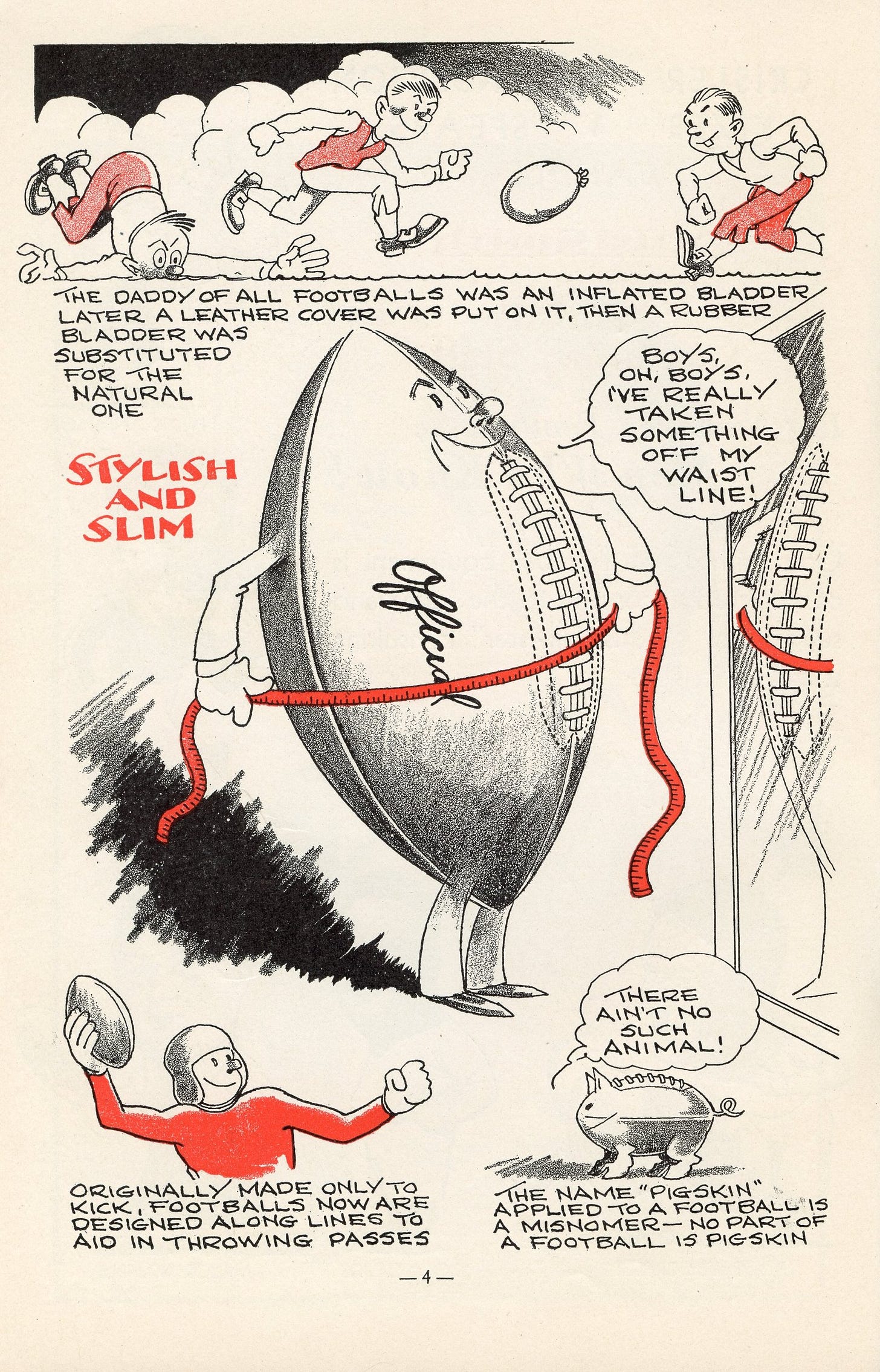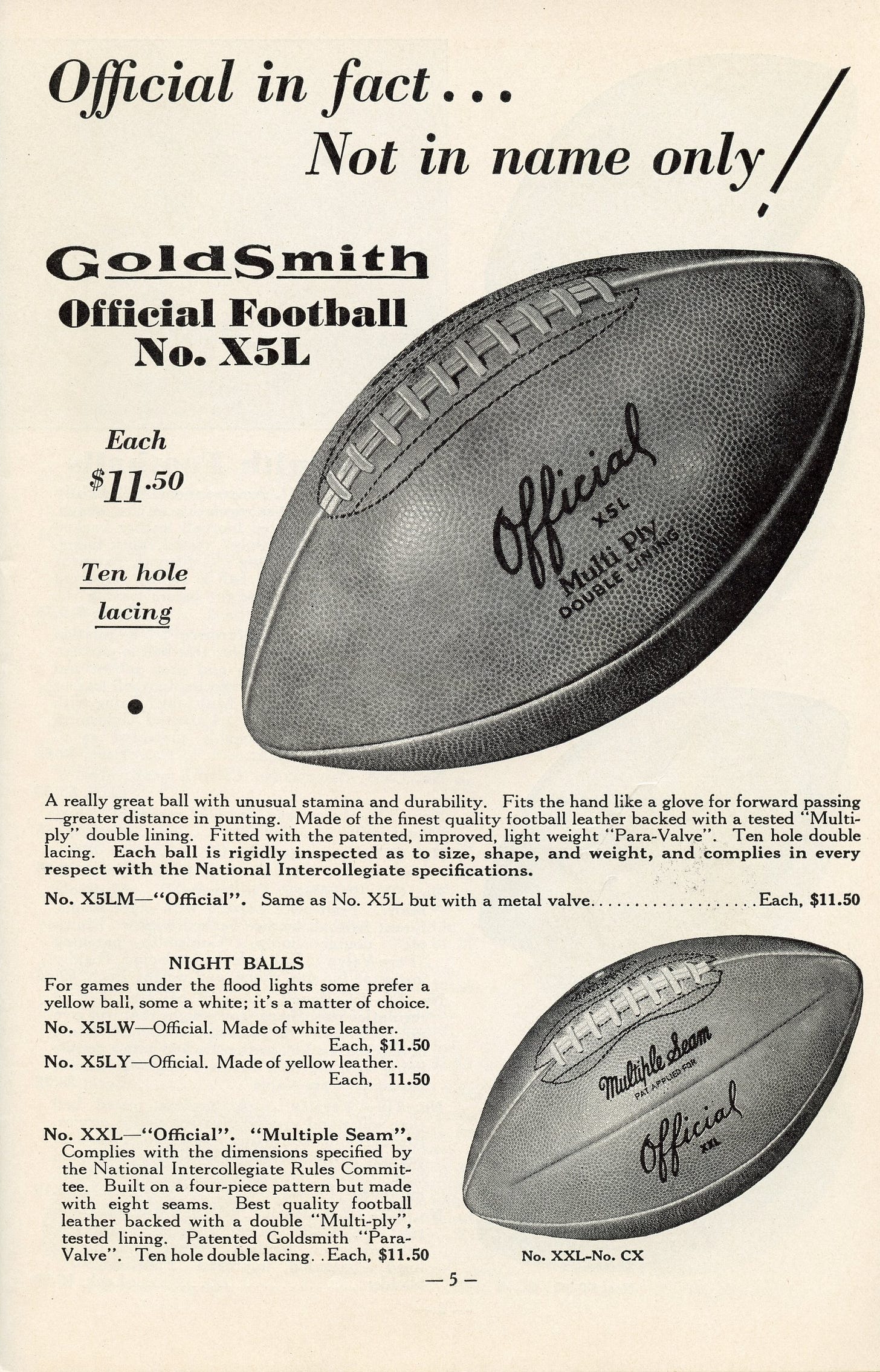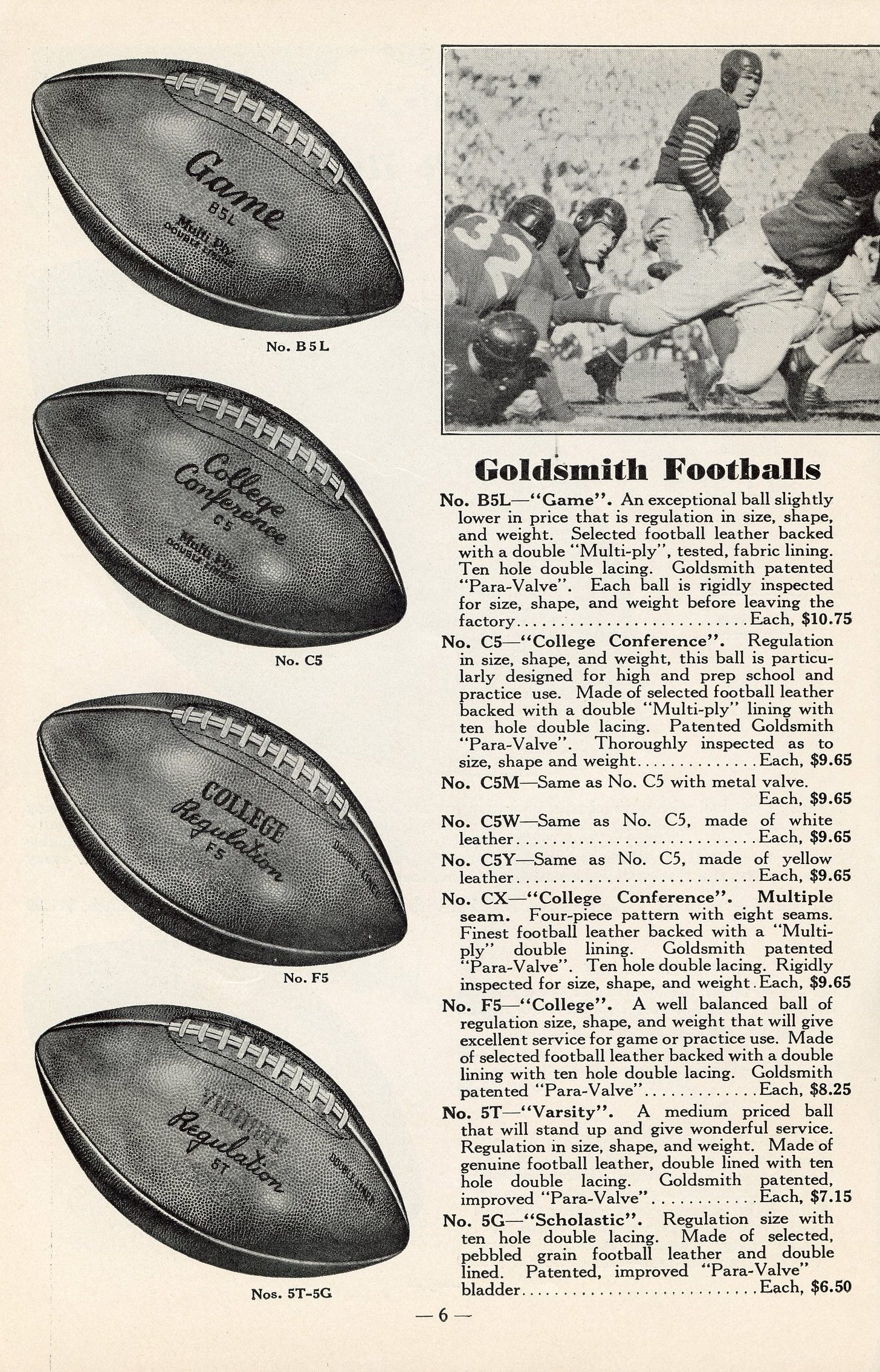Today's Tidbit... 1935 GoldSmith Sports Equipment Footballs
This is the second of seven articles in a series covering the 1935-36 Fall & Winter GoldSmith Athletic Equipment catalog. Preceding each section of the catalog is a one-page cartoon about the history of that type of equipment, in today's case, football pants.
Click the appropriate link for other stories in the series:
Consulting Staff | Footballs | Shoes | Pants | Jerseys | Helmets | Shoulder Pads | Miscellaneous
The football cartoon focuses on two topics: the early history of footballs and a recent change to their specifications. Early footballs were inflated pig bladders that were kicked around in various folk games, often with the men from two villages trying to kick the ball into the center of the opposing town. Over time, the bladder became leather-covered, with few players involved in the game. Some game variations allowed players to pick up the ball and run with it, and they tended to use an easier-to-grip oval ball. Those playing kicking games that prohibited carrying the ball preferred a round ball. Likewise, the oval ball proved easier to obtain lift when kicking the ball over the crossbar, while those playing soccer needed limited lift to kick the round ball under the crossbar. (Click images to enlarge)
The center of the illustration shows a ball admiring its slimmer waistline due to a 1934 rule to facilitate forward passing by reducing the ball's circumference by one inch, the final reshaping from its rugby ball origins. The 1935 ball was only a decade removed from the days of having to unlace the ball to reinflate the by-then rubber bladder, so the lacing remained flexible, like that used with baseball gloves. The GoldSmith's top-of-the-line X5L had ten cross laces compared to the eight used today, presumably to enhance the passer's grip. The page also shows GoldSmith offered Night Balls in yellow or white for visibility in the poorly-lit stadiums of the time. They also provided an eight-seam version of the ball.
The following page offered a series of brown, yellow, or white balls with four or eight seams at progressively lower prices. Presumably, the lower-priced balls used slightly lower-quality leather and other materials or omitted certain guts or stitching.
The progression continued on the third page of footballs, most of which had eight cross laces, with prices dropping from $11.50 for the X5L on the first page to $1.30 for the 5B "Bearcat." GoldSmith also offered replacement bladders and rubber playground balls.
Finally, GoldSmith offered a variety of accessories, including pumps for inflating balls, gauges to test the inflation levels, and several tools to relace balls. The page also shows whistles, horns, and timers for football officials. Unlike stopwatches, the timers displayed the time remaining in the period rather than the time that had transpired.
GoldSmith offered footballs for virtually every budget in 1935 while also offering the tools to repair footballs in the days before they became throwaway items. Footballs of the future gained stripes and then had them taken away by the NFL, and the need for yellow or white footballs disappeared with improved illumination. Their lacing shifted from leather to plastic over time and became more prominent. Still, the ball's dimensions remain unchanged from those offered in the 1935-36 Fall & Winter GoldSmith Athletic Equipment catalog.
Click the appropriate link for other stories in the series:
Consulting Staff | Footballs | Shoes | Pants | Jerseys | Helmets | Shoulder Pads
Football Archaeology is reader-supported. Click here to buy one of my books or otherwise support the site.






